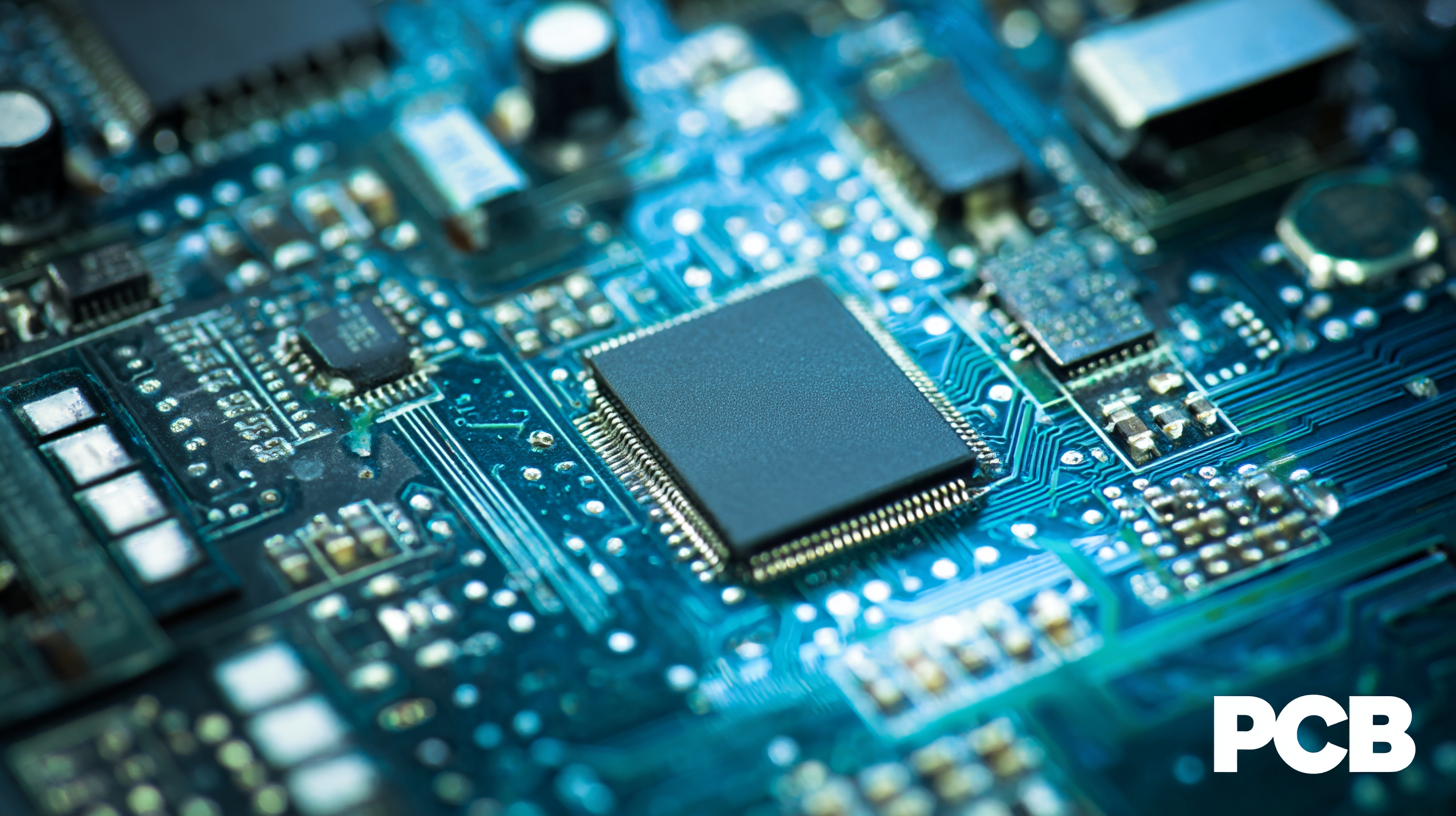- PCB Assembly
- PCB Fab
- Resources
- Company
- Blog
Global Leaders in PCB Assembly: Unlocking Top Quality and Efficiency for Worldwide Exports
In today's fast-paced global market, the demand for high-quality and efficient PCB board assembly is at an all-time high. As industries expand their reach internationally, the role of top-notch PCB assembly services becomes increasingly critical in ensuring that electronic products meet both quality standards and delivery timelines.

This guide delves into the leading players in PCB assembly, highlighting their innovative techniques, advanced technologies, and best practices that contribute to superior quality and reliability in manufacturing.
By exploring these global leaders, businesses can unlock effective strategies to enhance their own PCB assembly processes, ensuring that they remain competitive and responsive to the growing export demands.
Whether you are an established manufacturer or a startup looking to navigate the complexities of international trade, understanding the pivotal role of PCB board assembly will equip you with the insights needed to thrive in a dynamic global landscape.
Global Manufacturing Excellence: Why China Leads in PCB Assembly
China stands at the forefront of PCB assembly, boasting a remarkable 40% share of the global market according to the IPC (Institute of Printed Circuits). This impressive position is attributed to several key factors: advanced manufacturing technologies, diversified supply chains, and a skilled workforce. The nation's investment in automation and Industry 4.0 initiatives has further enhanced the efficiency of its production processes, enabling rapid turnarounds and cost-effective solutions.
A report by Statista indicates that the total value of PCB exports from China reached approximately $30 billion in 2022, underscoring its critical role in global electronics supply chains.
Moreover, China's strategic focus on innovation has led to continuous improvement in quality standards. The country has adopted rigorous compliance measures and certifications, such as ISO 9001, ensuring that products meet international quality benchmarks.
This commitment to quality is reflected in a survey by the Global Industry Analysts, which found that 80% of respondents consider China the most reliable source for PCB components. As companies worldwide seek to enhance their competitiveness, partnering with Chinese manufacturers not only provides access to top-tier products but also supports the drive for excellence in global manufacturing.
Innovation and Technology: Driving Efficiency in PCB Production
In the rapidly advancing world of electronics, the demand for high-quality printed circuit board (PCB) assembly has surged significantly, driven by innovations and technology. According to a recent report by Smithers Pira, the global PCB market was valued at approximately $60 billion in 2021 and is projected to grow at a CAGR of 4.3% through 2026. This growth is largely attributed to the increasing use of PCBs in consumer electronics, automotive applications, and industrial machinery, necessitating stringent quality and efficiency standards among manufacturers.
One of the key technological advancements contributing to efficiency in PCB production is the adoption of automation and artificial intelligence. A study by IPC reveals that companies implementing automated assembly processes have seen a 30% reduction in production costs and a 20% decrease in defect rates. Furthermore, the integration of IoT devices and data analytics enables real-time monitoring and predictive maintenance, ensuring that production lines operate at optimal efficiency, thereby unlocking the potential for higher exports. As global leaders continue to embrace these innovations, the landscape of PCB assembly is set to become even more competitive and quality-driven, aligning with the demands of a growing international market.

Quality Standards and Certifications: Ensuring Top-Notch PCB Exports
In the highly competitive world of PCB assembly, adherence to quality standards and certifications is pivotal for businesses aiming to export their products globally. These standards ensure that the assembled boards meet specific performance and safety benchmarks, which builds trust with clients and stakeholders. For instance, certifications such as ISO 9001, IPC-A-610, and UL mark are essential for demonstrating a company’s commitment to quality management and manufacturing excellence. By obtaining these certifications, companies not only enhance their credibility but also differentiate themselves in a saturated market, leading to increased export opportunities.
Moreover, compliance with international quality standards helps companies mitigate risks associated with product failures and recalls, ultimately safeguarding their reputation. Maintaining rigorous testing and quality assurance processes throughout the PCB assembly stages is crucial. These practices ensure that every product leaving the facility meets or exceeds the outlined criteria, thus aligning with the global demand for high-quality electronic products. As the PCB industry continues to evolve, embracing these certifications and quality standards will be key for manufacturers seeking to unlock new markets and exceed customer expectations in their export ventures.

The Role of Skilled Labor in Enhancing PCB Assembly Efficiency
The efficiency of PCB assembly is increasingly influenced by the availability of skilled labor. As the manufacturing landscape evolves, companies are emphasizing the importance of workforce training and development to stay competitive. Recent studies indicate that industries with a higher percentage of skilled workers experience a 20-30% increase in production efficiency. This trend is particularly evident in regions like Mexico and the Dominican Republic, where nearshoring opportunities are being explored to leverage local talent while meeting the growing demand for PCBs.
Furthermore, the integration of advanced technologies such as AI and robotics is reshaping the PCB assembly process. Reports suggest that companies adopting AI-driven systems see a dramatic enhancement in precision, reducing defects by as much as 40%. The combination of a skilled workforce and cutting-edge technology not only streamlines operations but also supports the quicker response to shifting market demands. As global leaders in PCB assembly strive for excellence, the synergy between skilled labor and technological innovation remains crucial in enhancing overall assembly efficiency, ultimately benefiting worldwide exports.
Global Leaders in PCB Assembly: Unlocking Top Quality and Efficiency for Worldwide Exports
| Country | Average Production Time (days) | Skilled Labor Force (thousands) | Quality Certification (%) | Export Value (Million USD) |
|---|---|---|---|---|
| USA | 15 | 300 | 95 | 1200 |
| Germany | 10 | 250 | 92 | 800 |
| China | 7 | 1500 | 88 | 2500 |
| Japan | 12 | 180 | 90 | 600 |
| South Korea | 9 | 220 | 91 | 700 |
Global Market Trends: The Demand for High-Quality PCB Solutions
In today’s rapidly evolving technological landscape, the demand for high-quality PCB solutions has reached unprecedented levels. Businesses across various industries are recognizing that the backbone of their electronic devices hinges on the reliability and performance of Printed Circuit Boards (PCBs). This surge in demand is driven by the increasing complexity of electronic products, as consumers expect more advanced functionality in compact designs. Consequently, manufacturers must adopt stringent quality standards and innovative assembly techniques to ensure their PCBs meet the evolving requirements of global markets.
Moreover, the push for efficiency in production processes is evident as companies strive to maintain competitive edges in international trade. Automation and advanced manufacturing technologies play a crucial role in enhancing the quality of PCB assemblies while reducing lead times. As companies expand their export capabilities, aligning with global trends that prioritize reliability and sustainability becomes essential. The ability to provide high-quality, efficiently produced PCBs not only boosts a company's reputation but also fosters long-term partnerships with clients worldwide, addressing their needs for superior electronic solutions in a dynamic market environment.
Global PCB Assembly Market Trends
Phone
 WhatsApp
WhatsAppEmail
Offer Electronics Manufacturing All-in-One
PCBONLINE® is a registered trademark or service mark of pcb online limited or its affiliates.
Copyright © 2001-2024 Pcb Online Limited. All rights reserved